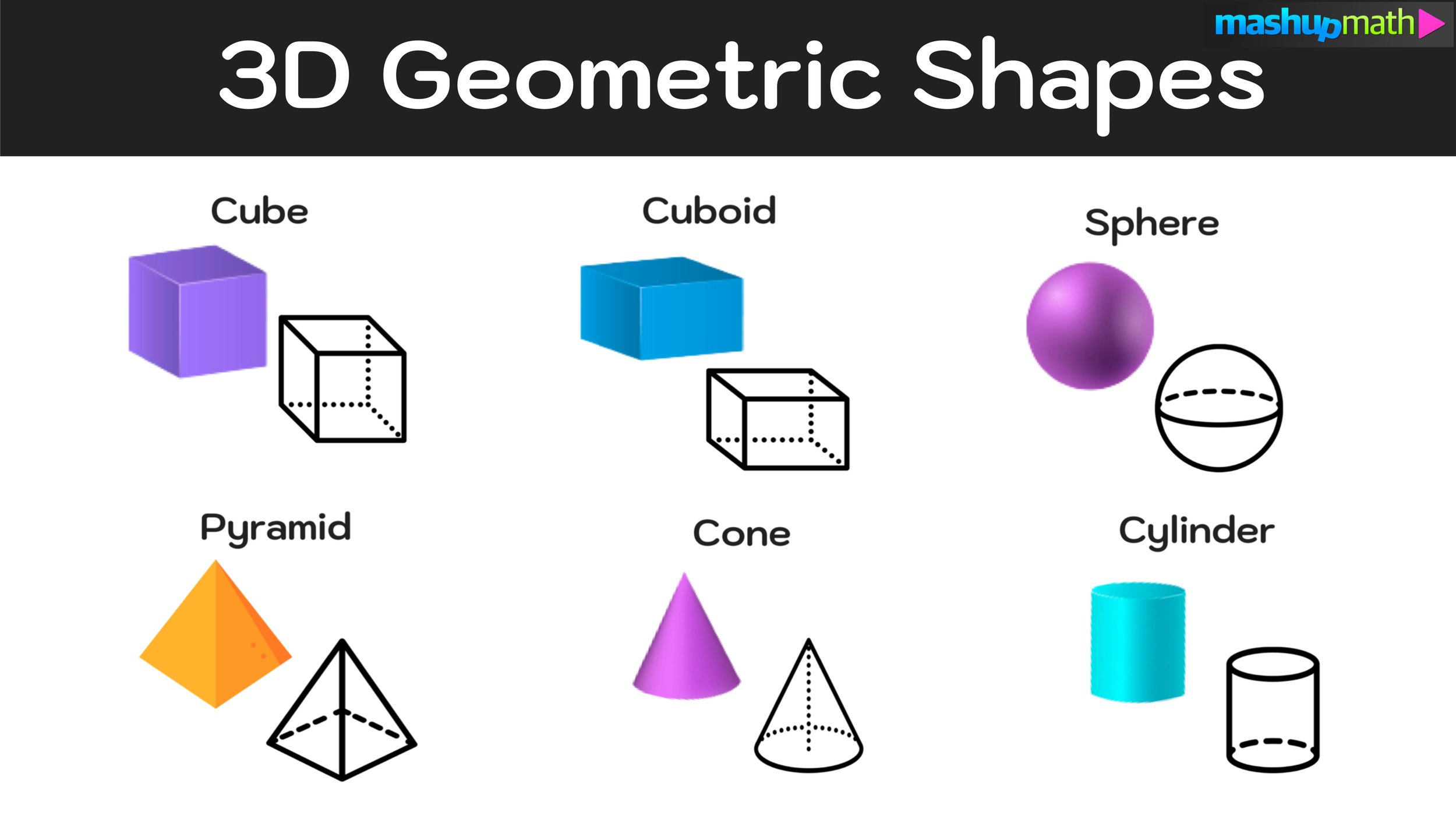

Geometrical shapes are all around us. They make up the form and structure of every two-dimensional (2D) and three-dimensional (3D) object.
In mathematics—namely geometry—and in real life, geometric shapes are two or three-dimensional figures that can be recognized and categorized based on a specific outline/boundary and other attributes including curves, lines, and angles. Both types of geometric shapes (2D and 3D) will be covered in this guide, which includes a complete list of all geometric shapes names along with images and a short description and key features of each.
You can use the quick links below to jump to a section on any specific types of geometric shapes and to access your free Printable Geometric Shape Chart (PDF file):



A geometrical shape is a structure that has a definitive shape comprised of curves, lines, and/or points.
You are probably already familiar with many common 2D geometric shapes like circles, ovals, squares, and rectangles, in addition to common 3D geometric shapes such as cubes, spheres, and cylinders.
The main concept behind understanding geometric shapes is that every shape has unique properties and features that distinguish them from other shapes. Each geometric shape has a unique name (ex. rectangle, square, oval, etc) and geometrical shapes can be easily identified by looking at an image and seeing the shape’s characteristics, such as number of sides, angles, curves, or points.
In fact, geometric shapes are all around you all of the time. Figure 01 below shows examples of common 2D geometric shapes and 3D geometric shapes and how they relate to objects in the real world. Later in this guide, we will take a look at geometric shapes art and design examples.